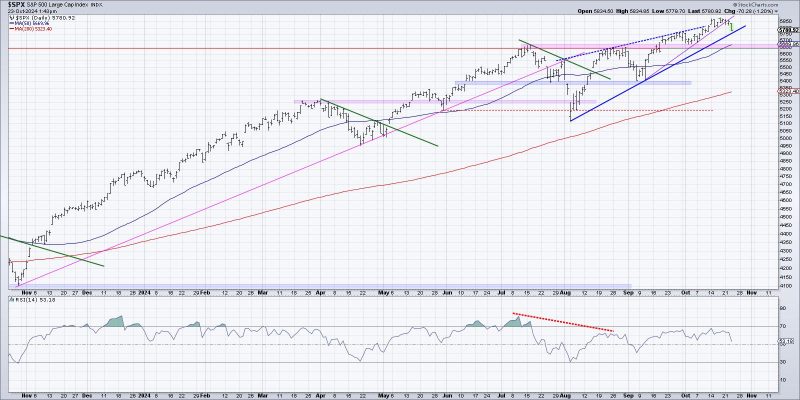The dynamics of stock market trends often follow a cyclical pattern that swings between accumulation and distribution phases. Seasoned investors keenly study these cycles to discern where they (and their investments) stand. This helps them make better decisions about holding, buying or selling their stocks. While the accumulation phase indicates a likely surge in stock prices, the distribution phase serves as a warning light of an impending drop in the market. It is, therefore, imperative that investors understand the signs that signal the probable onset of a distribution phase in a stock’s life cycle. Below are three key ways to visualize the start of a potential distribution phase.
Firstly, the ‘Up Day, Down Volume’ technique is a widely used method to spot the possible inception of the distribution phase. This occurs when a stock has an ‘up day’, meaning the stock closed at a higher level than its opening price but with decreased trading volume compared to the preceding trading day. This signifies that although the price of the stock has increased, the lack of higher trading volume hints at the absence of widespread investor enthusiasm. It might indicate that savvy investors are offloading their shares to the less informed or overly optimistic investors. This method helps to visualize the potential distribution phase by comparing the closing price and the trading volume of a stock.
Secondly, the ‘Up Day, Down Day’ approach can also serve as an indication of an imminent distribution phase. This trend unfolds when a stock experiences an ‘up day’, but is then followed by a consecutive ‘down day’ with higher volume. In other words, the share price falls with a rise in trading volume. This suggests that after a short-lived optimism, the investors, possibly informed or institution investors, start selling off their shares en masse, triggering an increase in downward pressure on the stock. Consequently, it can be a precursor to the onset of the distribution phase.
Lastly, the ‘Distribution Day Count’ tool allows investors to visualize and keep track of the number of distribution days witnessed over a specific period. A distribution day is defined as a day where the stock market index decreases by at least 0.2% with a higher trading volume compared to the previous day. Notably, a high frequency of distribution days within a relatively short span is a warning sign of a potential shift from an accumulation phase to the distribution phase.
These three techniques are essential tools for investors and are worth incorporating into any investment strategy. The ‘Up day, Down Volume’, ‘Up Day, Down Day’, and ‘Distribution Day Count’ techniques can provide invaluable insights into upcoming phase transitions in the stock market. Nonetheless, investors should not rely solely on these tools. Multiple factors—internal and external—affect market trends, and these should be considered in conjunction with these methods. Ultimately, making calculated and well-informed decisions is the proven path to success in the sophisticated world of stock market investment. While these strategies might not completely eliminate the risks associated with investing, they can certainly contribute to mitigating possible losses by timely recognizing the onset of a distribution phase.
